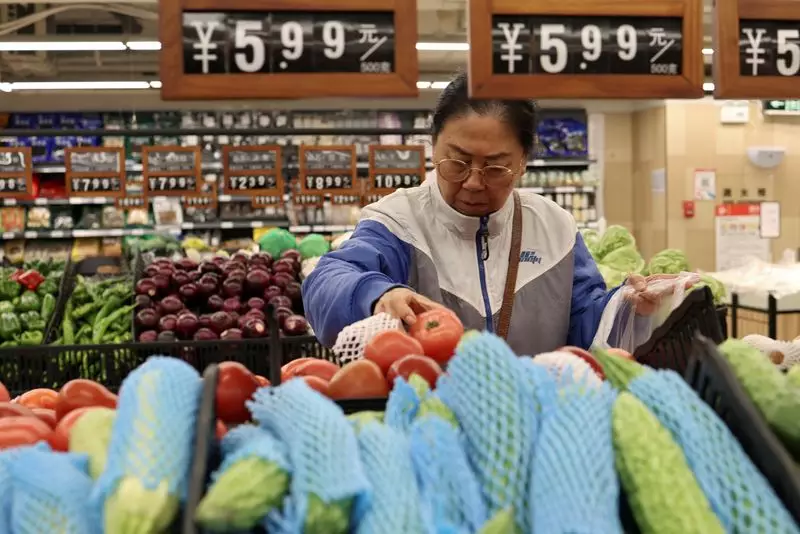In recent months, China’s economic performance has been a subject of keen scrutiny and criticism. As the world’s second-largest economy grapples with various challenges, including a beleaguered property market and sluggish consumer spending, the prospects for growth appear increasingly tenuous. Recent data forecast a slowdown in GDP growth to approximately 4.5% year-on-year for the third quarter, down from 4.7% in the previous quarter. This decline marks the weakest growth rate since early 2023, a worrying trend that puts significant pressure on policymakers who are striving to rejuvenate the economy.
Financial authorities in Beijing recognize the urgency of these challenges, particularly as they aim to meet a growth target of around 5% for 2024. Analysts are projecting that economic expansion will fall short of these goals, with estimates suggesting a growth rate of 4.8% for next year and possibly slipping further to 4.5% in 2025. Such predictions raise questions about the sustainability of China’s economic model and the effectiveness of its policy interventions.
Central to the economic malaise is the persistent downturn in the property sector, which has not only cooled investor optimism but also exacerbated deflationary pressures across the economy. The interplay between industrial production and domestic consumption outlines a fundamental imbalance; while factories continue to produce at a brisk pace, consumer spending has stagnated, leading to heightened risks of deflation. The challenge is further complicated by the mounting local government debt, which limits fiscal interventions.
Policymakers have historically relied on infrastructure and manufacturing initiatives as catalysts for growth, yet there are calls for a paradigm shift towards stimulating consumption. This shift is critical as it reflects an understanding that long-term economic resilience depends on a robust consumer base. However, discussions surrounding a new fiscal stimulus package remain vague, leading to uncertainty in markets.
Recent forecasts indicate that on a quarterly basis, China’s economy may have expanded by 1.0% in the third quarter, an improvement over the 0.7% growth observed between April and June. Yet, this modest uptick does little to assuage fears about underlying economic weaknesses. Anticipated data on September’s economic activity is expected to convey a mixed narrative: retail sales are reportedly gaining momentum, whereas investment appears to be dwindling.
Compounding these issues is the risk of a deflationary spiral, particularly as both exports and imports have faltered. Recent figures reveal a significant slowdown in export growth in September, raising alarm bells as the global landscape shifts and trade relations become increasingly strained. Such developments necessitate urgent corrective actions from the Chinese government to avoid deeper economic pitfalls.
In response to these troubling trends, China’s finance minister has signaled intentions to significantly ramp up debt levels in an effort to bolster economic growth. Yet, the specifics of the proposed stimulus package remain inconclusive, creating a fog of uncertainty for investors. Reports suggest that the government may issue an additional 6 trillion yuan in special treasury bonds over the next three years, illustrating a commitment to fiscal expansion amidst growing economic pressures.
Furthermore, the central bank’s recent monetary policy measures demonstrate a proactive approach to reviving economic activity. This includes the most aggressive support measures seen since the COVID-19 pandemic, characterized by interest rate cuts and substantial liquidity injections. However, while such measures are necessary, skepticism remains regarding their potential efficacy given the structural issues facing the economy.
As China navigates its current economic dilemmas, the road ahead appears to be fraught with challenges. Policymakers must tackle various intertwined factors: reviving consumer confidence, stabilizing the property market, and managing local government debt. Without a concerted and coherent strategy, the goal of achieving sustained growth could remain elusive.
Ultimately, while short-term stimulus measures are crucial, a comprehensive and inclusive economic reform approach will be vital to securing long-term stability and ensuring that China’s economic aspirations are realized. In this complex landscape, the path forward requires both vigilance and innovation from policymakers, setting the stage for a profound transformation in how China approaches its economic challenges.


Leave a Reply